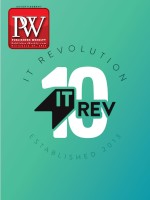Art critic Dorment revisits allegations of corruption that preceded the 2012 disbanding of the Andy Warhol Foundation’s authentication board in Warhol After Warhol (Pegasus Crime, Dec.).
When did you know the story of Joe Simon’s 2007 lawsuit against the Andy Warhol Foundation would become a book?
I’d been thinking for some time of revisiting my articles in the New York Review of Books about the Warhol Foundation and its authentication board. Of necessity, those articles were extremely technical and closely argued. They were not an easy read. I did not believe anyone outside of art dealers, museum curators, and scholars would be interested in reading an entire book about the authentication of a single painting, so I needed to find a way to tell the story that was as exciting and shocking to the public as it had been to me. The breakthrough came when I realized that I could tell it in the form of a memoir, using Joe’s real-life experience as a kind of literary device. By telling the story through his lawsuit against the foundation, the reader would learn everything I’d tediously explained in the original articles by engaging with it through his extraordinary personality and life story. My aim was to keep people reading the book whether or not they are interested in Warhol, or even in art.
What was the most difficult section to get right?
I had to rewrite every sentence 20 times. Nothing came easily. If I had the time, I’d start over tomorrow.
What surprised you most about the actions of the board?
In the 2009 pretrial hearings, lawyers for the foundation never once brought up the only question that mattered in the case: on what grounds had the board denied the picture’s authenticity? Instead, they spent days attempting to discredit Joe with smears and conjectures.
What do you consider the most important impact of your reporting?
My articles were the first counter-argument to the foundation’s claims, and they were widely read. Very quickly I heard that law schools were assigning them to students at a time when there was no separate category called “art law,” and that made me proud. Without those articles, the world had no way of hearing the other side of the story, the side the foundation seemed determined to suppress.
Are these kinds of authentication kerfuffles widespread in the art world, or mostly contained to Warhols?
Well, it sure goes on! Look at the Knoedler scandal a few years ago, in which the venerable New York gallery acquired and sold tens of millions of dollars of fakes, apparently even a work with the name Pollock spelled incorrectly. They hired the same law firm as the Warhol Foundation, so they got off as well.



 Volume 270
Issue 39
09/25/2023
Volume 270
Issue 39
09/25/2023





